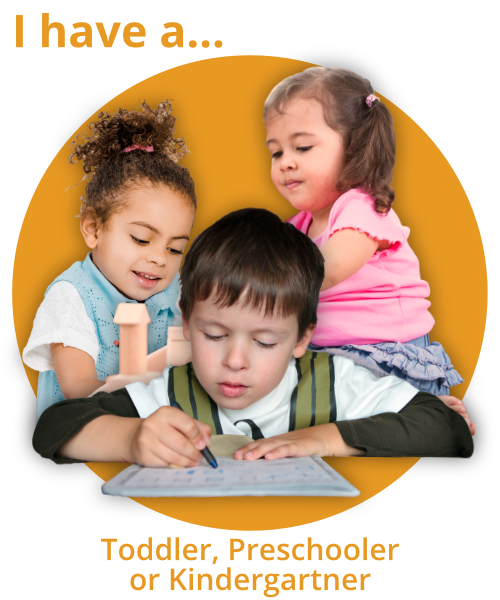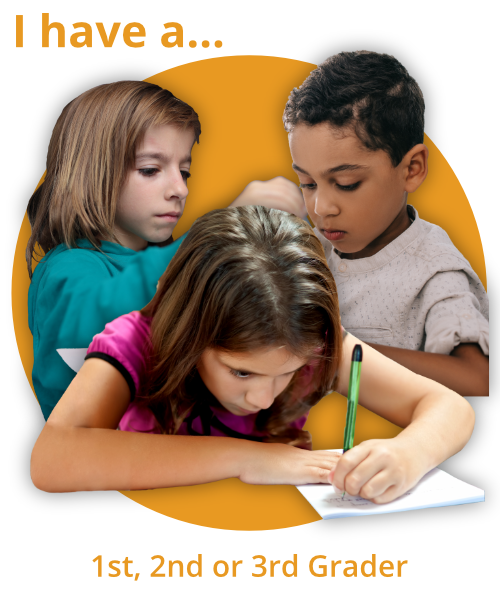Can We Stay In Bed All Day
I'm Aubrey Hargis, Montessorian and mom of two. One of the greatest gifts of my life was the one I gave myself to homeschool my own children. Through homeschooling, I learned to see education in a different way; to embrace my own creativity, and challenge the expectations of my community who wanted to raise children who would be compliant within a prescribed educational system. I've learned a lot, and I keep on learning...because education is a journey we take with our children and the opportunities for learning start over every day.
Hey, Sweet Friend
This episode is part of a mini-series about preparing your Montessori home for your child's educational journey, from the perspective of an intentional parent who sees themselves as their child's educator--which is what I call a homeschooler, whether you’re homeschooling full-time or not! So we are going to be talking about the bedroom today. It's actually something I like to call bedschooling… because sometimes my children do want to stay in bed all day, and we do all of their stuff: all their academic stuff, and all the good kind of conversational stuff, right in bed. So I'm gonna dig into that and talk about it.
There are previous episodes that go along with this little series. I did one about seeing your house as your little Montessori schoolhouse. And I did one about the kitchen and the dining room. We just talked about the playroom or the living room last week. If you are interested in having a Montessori way of life at home, you might want to start there!
Meet Sonya
Meet Sonya, Montessori mom of two, living in Texas, USA. She’s an alumna of Homeschool of the Redwoods Primary and a member of Constellation. We are featuring members like Sonya so you can get a sense of what it’s like to belong to the Montessori homeschooling community! You can read more about Sonya and her family here.
A Practical Bedroom: The Toddler Years
Before we talk about what kind of schooling things happen in the bedroom, let's discuss the purpose of this room. You will want to consider your child's sleeping space-- whether it's your bedroom, whether it's their bedroom, whether they sleep in the living room, wherever they sleep. Think about the main purpose of that space, and what the child spends the most time doing there. Is there a comfortable space for sleeping in the room?
Not every child sleeps in their own bedroom. My own two children co-slept with us for a long time. Since they were sleeping with me, I had no reason to make their bedroom environment a sleep environment, at least not for nighttime. So, if your children are not using their bedroom for sleeping, you may use it as a playroom, in which case you will want to give a listen to last week’s episode, as it might be resonant.
If your child will be sleeping in that room, something I would consider for the toddler years is whether it is conducive for sleep. Is the room dark enough in the evenings and during naptime to naturally help your child's brain recognize that it's sleepy time? It might be that you want to invest in some darkening curtains to help your child recognize that...or conversely, if your child is sleeping in forever and ever in the mornings, and that's making them go to bed really late at night, you might sneak in there and open those curtains in the morning to help cue your child to wake up. Now, most toddlers do get up really early, so it’s probably not a problem for you.
You might also think about the type of furniture that is in their room: Will it be cluttered and stimulating to your child, or is it going to be calming? If at all possible for your very young child, I recommend very minimal furniture in the bedroom, so it's very obvious that if this is a sleeping room. Make sure that you're not keeping a bunch of noisy toys inside there; keep those stimulating toys out in the living room or in a different area of the house where you’re more likely to be alert and playful! Instead, think about keeping some soft, calming, toys in there.
I also really like hanging artwork low in a toddler's bedroom, so that they can see it. You might have one or two things up a little higher to look at with your child; if you're holding your baby to go to sleep, or your toddler and swaying them around, adult height art may have a purpose. But if you want your child to be able to see it, I would hang it closer to the floor. Do consider safety; you want a frame with soft edges. You could also laminate the art and velcro or use sticky-tack to put it up if you know your child will not try to remove the fastener--you know your child, but there are many solutions! Just be mindful of putting anything on your child's wall that is a choking hazard.
You're also going to want to think about where your child is going to sleep. In Montessori, we often have a floor bed or a low bed, and so part of your child's work during the toddler years is learning to be comfortable in that sleeping environment and get in and out of bed independently. That's why we usually offer floor beds for babies and young toddlers--so they can easily get in and out on their own, and nobody has to lift them up and over the crib rails to get them into bed. That is also part of your child's schooling! They're learning how to get themselves into bed. That way, if they're tired, they can just go in there and do that independently.
You also are going to think about how and where your child dresses. If you have your one-year-old, you're probably still doing it for your child, but they can be involved in the choice making. Think about where you are keeping clothing so that they can be involved in the choice. If all the clothing is at the top of a very tall dresser, your child won’t be able to access them. So you might think about putting a basket on the floor with choices for the morning or evening. Keeping their clothes folded on a shelf can work well also, as long as your child isn't in a phase of pulling everything off the shelf. Little labeled baskets work well if you’re using a shelf, and a lot of parents enjoy cubby-style storage. They're almost like little drawers that the child can pull out and be able to see their clothes. For a very young child, you’re only going to offer what is available at that moment. You might keep the rest of their clothes somewhere else, and then just give them a limited selection to choose from. Remember, this is part of their homeschooling, too! Part of what they're learning to do is dress themselves.
Something else to consider: what happens when they wake up in the morning if you're not awake yet? Do they come out of their room and go eat something in the kitchen? Do they stay in their room and play until you come to get them? In an ideal Montessori environment, you are creating a safe space for your child to be as fully independent as possible.
For us, homeschooling in those toddler years inside the bedroom was a really practical experience. We were playing with their toys sitting on the floor, doing their laundry, folding lots of clothes, putting them away, helping them to get dressed...there was a lot of practical life happening inside that room. We had a little shelf with some toys on it; little soft stuffed animal types of toys, or maybe a puzzle or two, but nothing excessive. Since my children didn't sleep in their bedroom as toddlers, it was a room that we designated as being for getting dressed in and for playing in. We had a floor bed, but we did not necessarily sleep in it. I remember using it a lot when I was pregnant! I would go into my oldest child's room while I was pregnant with my youngest, and it would be nap time. However, at two and a half he had dropped his nap already. So I would just lay on his floor bed, and we would snuggle in, read together for a little bit, and then I would sort of doze off. He would just sit and play on the floor of his room, hanging out in there with me while I was resting on his bed. So the floor bed was also really useful for me.
Fostering Independence: The Primary Bedroom
In the primary years, I recommend that you revisit all of the above, because your child may be in a different state of mind. They might be ready for more independence with their clothing, for instance. Instead of just one pair of choices, you'll provide several choices for them. I know a lot of Montessori parents like to create a mini-closet area for their children. It can be really cute and really fun, but I think baskets are more practical, effective, and easier for children to pull out and use than things on hangers. This is just my personal preference, so do whatever works for you!
In the primary years, you may graduate to a real bed; one that is higher but which your child can still get in and out of. Your child may also want more input on which toys are in their room, and they might start to have opinions about what they want to stay in their bedroom, or what they want to keep private in there. They may suddenly want a nightlight, even though they’ve slept in the dark forever! During the primary years, you might find that your child wants to use that bed for gross motor development. It might end up being used as a trampoline, or as an area to bounce about. It certainly was in our house, and that is fine as long as the bed is sturdy enough for that. Make sure to keep your boundaries based on safety.
During these years, I recommend that you don't go too high with your bed frame. Even if your child is bigger and can climb up to a regular-sized bed, it is still quite a drop if they roll over and fall out. You might still be in a phase where you're putting a little barrier at the edge of the bed. While I know that a lot of parents immediately want to jump to bunk beds at this age, I don't recommend them during the primary years. They are a better fit for the second plane, six and up, depending on the construction of it. Don't feel like you have to jump right to like the biggest big kid bed! It is perfectly fine to keep the floor bed for a long time. My oldest 14-year-old still has a mattress and the box spring on the floor, because his bed frame broke. It was just a temporary solution, but after a few months, he decided he was just as happy sleeping with them on the floor! When my husband and I had children, we put our mattress on the floor for them to easily co-sleep in. It's not a big deal. It's very common in other cultures to have floor beds. Don't feel like there's anything wrong with just keeping your kid’s floor bed!
The bed is also a great cuddly place for storytime and daily rest at this age. This was the age when my children first started to go to the shelf and bring their work over to their bed. At first, I thought this was kind of funny because as a Montessori guide, I'm used to children either working on the floor on a rug or at a table. When I started thinking about it though, the bed is a nice defined area for one's work just like a table or a rug. It's a little squishy, so things might get a little squished around. I would keep a boundary around it, maybe like the work needs to be on a tray or something so that it doesn't just roll off or roll into your lap.
A Collaborative Space: The Elementary Years
Because we established the bed as being a safe space, where my children could come and go at will, they were comfortable spending time there. We would go in there and lay with them in their bed, or read to them. We always had at least a twin in there, something big enough so that an adult could go and slide in and sit with them and connect! We continue that in the Elementary years.
By the time your child is elementary-aged, they might have a really strong opinion on what they want their room to look and feel like. People often ask: “How do I prepare the environment in the elementary years?” My answer is: you don't prepare for their environments. That’s shocking to a lot of people, especially if you're coming from the Montessori primary mindset, where you are hearing repeatedly that it's the adult’s job to prepare the environment. In Elementary, it's a collaborative responsibility. You and your child work together to curate an environment. You cannot curate it for them anymore without their consent. As you ask them to take more responsibility for their environment, they want to have more say! Do they want a desk or workspace in their room? Will there be a dresser--and will it hold clothes or toys? You might have an opinion and they might have another solution! Sometimes they'll make decisions that don't seem to make good sense to you...and it's just up to you to work with them.
They do have access to a more logical part of their brain, although not full access to it. We don't get a fully functional prefrontal cortex until we're like 24 to 30 years old. Your child is still going to do things that don't make sense, and that's part of the wonderment of childhood. They're going to do things that are experimental to see what happens and to assert their independence. You might end up with an elementary room that is messy and cluttered. But guess what? It's not your total responsibility to make sure it's clean and tidy and perfect anymore. In the elementary years, your child takes part in that responsibility. It doesn't mean that they can always clean up all that by themselves, you may need to support them. Some children are naturally tidy, and others aren’t. Sometimes it is dependent upon the culture and the nature of their parents, too!
For us, this is a space where they can keep their messy projects. They might do a lot of work on their bed; my kids are now old enough that they often sit with their laptops in bed! Classes, or personal screen time--it's their room, it's their choice. If I notice that something is not conducive to their concentration, or that something is not working at night, like they're not sleeping, then it's my job to come in and collaborate with them on solutions. In general, I can tell you that the bed itself is a great safe place to have conversations with your child about life in general and all manner of subjects. I tell people in my courses all the time that you can talk to your children about just about any subject. It's really about how you introduce that subject, whether you are giving them information that is appropriate for their brains to consume. If you want to talk to your child about what's going on around the world, you can do it in a way that your child feels safe.
I recommend you sit in your child's bed, start by reading a story, and then get into a deep conversation on the topic while your arm is right around them if they like that, and you're all snuggled up together. That is where a ton of fantastic homeschooling discussions have happened in our house. It is also a place that we go to problem solve. It's just fantastic for the elementary years! Obviously, things change as your children get even older. The teen years are completely different. But I can say for children under 12, it can be just that comforting, snuggly safe place where you have hard conversations about things, or where you work to problem solve things, or whether you make your apologies about things that you regret doing--it can all happen in bed. If you have some kind of argument, it can be a space where you both are able to communicate your feelings to each other. Those are crucial components to your homeschool.
While you are having these conversations, you are teaching them academics, you are going to be weaving in discussions about geography, about culture, about your math. Maybe you'll pull out some resources to read-- right from Google on your phone, or from a book that you're reading together. All academic subjects can be woven into this conversational space that you have with your child while you are all snuggled together in their bed or in your bed. Don't be afraid to get creative with that space and try different things in there.


